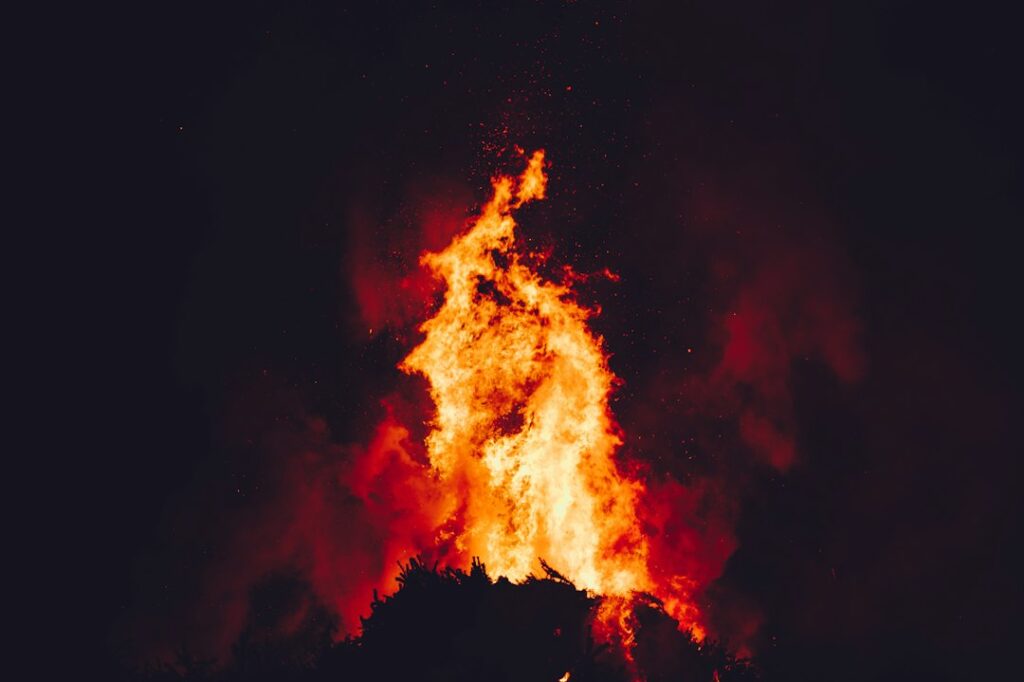Fire safety inspections are a crucial aspect of maintaining a safe environment in any building. These inspections involve a thorough examination of the premises to identify potential fire hazards and ensure that the necessary fire safety measures are in place. The primary goal of fire safety inspections is to prevent accidents and minimize the risk of fire-related injuries or fatalities.
Key Takeaways
- Fire safety inspections are crucial in preventing accidents and ensuring the safety of building occupants.
- Identifying potential fire hazards is an important step in fire safety inspections.
- Evaluating the effectiveness of current fire safety measures is necessary to ensure maximum protection.
- Developing a comprehensive fire safety plan and conducting regular inspections are best practices for maintaining fire safety standards.
- Fire safety training and choosing the right equipment are also important factors in fire safety.
The Importance of Fire Safety Inspections in Preventing Accidents
Fire accidents can have devastating consequences, causing loss of life, property damage, and financial losses. According to the National Fire Protection Association (NFPA), there were an estimated 1,318,500 fires reported in the United States in 2018, resulting in 3,655 civilian deaths and $25.6 billion in property damage. These statistics highlight the importance of fire safety inspections in preventing accidents.
Fire safety inspections play a crucial role in identifying potential fire hazards and ensuring that appropriate measures are in place to mitigate these risks. By conducting regular inspections, building owners and managers can identify any deficiencies or areas that require improvement in their fire safety systems. This allows them to take corrective actions and implement necessary changes to prevent accidents and protect occupants.
Understanding Fire Hazards: Identifying Potential Risks
There are several common fire hazards that can be found in buildings, including electrical faults, flammable materials, inadequate storage practices, faulty wiring, and improper use of heating equipment. It is essential to identify these potential risks during fire safety inspections to prevent accidents.
During a fire safety inspection, inspectors will assess various areas of the building, including electrical systems, heating and cooling systems, storage areas, and emergency exits. They will look for any signs of potential fire hazards such as overloaded electrical outlets, blocked emergency exits, improperly stored flammable materials, or faulty wiring.
Identifying potential risks is crucial because it allows building owners and managers to take appropriate measures to eliminate or minimize these hazards. This may involve implementing proper storage practices, conducting regular maintenance of electrical systems, installing fire suppression systems, or providing adequate training to building occupants.
Assessing Fire Safety Measures: Evaluating the Effectiveness of Current Systems
Evaluating the effectiveness of current fire safety measures is an essential part of fire safety inspections. This involves assessing the functionality and reliability of fire detection and suppression systems, emergency lighting, fire alarms, and other safety equipment.
During an inspection, the inspector will test the functionality of fire safety equipment, such as fire extinguishers and sprinkler systems, to ensure they are in proper working condition. They will also check if emergency exits are clearly marked and unobstructed, and if emergency lighting is functioning correctly.
Assessing the effectiveness of current fire safety measures allows building owners and managers to identify any deficiencies or areas that require improvement. It provides them with valuable insights into the overall readiness of their building in the event of a fire and allows them to take necessary actions to enhance the safety of occupants.
Developing a Comprehensive Fire Safety Plan: Tips and Best Practices
Developing a comprehensive fire safety plan is crucial for ensuring the safety of occupants in a building. A fire safety plan outlines the procedures to be followed in the event of a fire and provides guidance on evacuation routes, emergency contacts, and other important information.
When developing a fire safety plan, it is important to consider the specific needs and characteristics of the building. This may include factors such as the number of occupants, the layout of the building, and any unique hazards present.
Some steps for developing a comprehensive fire safety plan include:
1. Conducting a thorough assessment of potential fire hazards in the building.
2. Identifying evacuation routes and ensuring they are clearly marked.
3. Establishing procedures for reporting fires and activating alarms.
4. Designating assembly points for occupants to gather after evacuating the building.
5. Providing training to employees and building occupants on fire safety procedures.
Best practices for creating a comprehensive fire safety plan include involving all relevant stakeholders in the planning process, regularly reviewing and updating the plan, and conducting drills to ensure that occupants are familiar with evacuation procedures.
Conducting a Fire Safety Inspection: Step-by-Step Guide
Conducting a fire safety inspection requires a systematic approach to ensure that all areas of the building are thoroughly assessed. Here is a step-by-step guide for conducting a fire safety inspection:
1. Review relevant documentation: Start by reviewing any existing fire safety plans, inspection reports, and maintenance records. This will provide valuable insights into the current state of fire safety measures in the building.
2. Assess potential fire hazards: Walk through the building and identify potential fire hazards such as blocked emergency exits, improperly stored flammable materials, or faulty electrical systems. Take note of any deficiencies or areas that require improvement.
3. Test fire safety equipment: Test the functionality of fire safety equipment such as fire extinguishers, sprinkler systems, and smoke detectors. Ensure that they are in proper working condition and meet the necessary standards.
4. Evaluate emergency lighting and signage: Check if emergency lighting is functioning correctly and if emergency exits are clearly marked and unobstructed. Ensure that signage is visible and legible.
5. Review evacuation procedures: Review the building’s evacuation procedures and assess their effectiveness. Identify any areas that may require improvement, such as additional signage or alternative evacuation routes.
6. Document findings: Document all findings from the inspection, including any deficiencies or areas that require improvement. This will serve as a reference for implementing corrective actions.
7. Develop an action plan: Based on the findings of the inspection, develop an action plan to address any deficiencies or areas that require improvement. Prioritize tasks based on their urgency and allocate resources accordingly.
8. Implement corrective actions: Take necessary actions to address the identified deficiencies and improve fire safety measures in the building. This may involve conducting repairs, installing new equipment, or providing additional training to occupants.
Common Fire Safety Violations: How to Avoid Them
During fire safety inspections, inspectors often come across common violations that can compromise the safety of occupants. Some common fire safety violations include blocked emergency exits, inadequate fire extinguisher maintenance, improper storage of flammable materials, and lack of proper signage.
To avoid these violations, it is important to regularly review and update fire safety measures in the building. This may involve conducting regular inspections, providing training to employees and building occupants, and implementing proper storage practices.
Tips for avoiding fire safety violations include:
1. Keep emergency exits clear and unobstructed at all times.
2. Conduct regular maintenance of fire extinguishers and other safety equipment.
3. Store flammable materials in designated areas and follow proper storage practices.
4. Ensure that all signage related to fire safety is visible and legible.
5. Provide regular training to employees and building occupants on fire safety procedures.
Fire Safety Training: Educating Employees and Building Occupants
Fire safety training is a crucial aspect of maintaining a safe environment in any building. It ensures that employees and building occupants are aware of the necessary precautions to take in the event of a fire and are familiar with evacuation procedures.
Fire safety training should cover topics such as:
– Identifying potential fire hazards
– Proper use of fire extinguishers
– Evacuation procedures
– Emergency contacts
– First aid techniques
Methods for educating employees and building occupants on fire safety include conducting regular training sessions, distributing informational materials such as brochures or posters, and organizing drills to practice evacuation procedures.
Fire Safety Equipment: Choosing the Right Tools for Maximum Protection
Choosing the right fire safety equipment is crucial for ensuring maximum protection in the event of a fire. There are several types of fire safety equipment available, including fire extinguishers, sprinkler systems, smoke detectors, and fire alarms.
When choosing fire safety equipment, it is important to consider factors such as the size and layout of the building, the specific fire hazards present, and any relevant regulations or standards. It is also important to ensure that the equipment is properly maintained and regularly inspected to ensure its effectiveness.
Maintaining Fire Safety Standards: Regular Inspections and Updates
Maintaining fire safety standards requires regular inspections and updates to ensure that all necessary measures are in place to prevent accidents. Regular inspections allow building owners and managers to identify any deficiencies or areas that require improvement and take necessary actions to address them.
In addition to regular inspections, it is important to regularly review and update fire safety plans and procedures. This may involve conducting drills to practice evacuation procedures, providing refresher training to employees and building occupants, and staying up-to-date with any changes in regulations or standards.
Tips for maintaining fire safety standards include:
1. Conduct regular inspections of fire safety equipment and systems.
2. Review and update fire safety plans and procedures as needed.
3. Provide regular training to employees and building occupants on fire safety.
4. Stay informed about any changes in regulations or standards related to fire safety.
5. Encourage a culture of safety by promoting awareness and accountability among occupants.
In conclusion, fire safety inspections are essential for maintaining a safe environment in any building. They play a crucial role in preventing accidents by identifying potential fire hazards, evaluating the effectiveness of current fire safety measures, and developing comprehensive fire safety plans. By following best practices, avoiding common violations, providing training to employees and building occupants, choosing the right fire safety equipment, and regularly inspecting and updating fire safety measures, building owners and managers can ensure maximum protection against the risk of fires.
FAQs
What is a fire safety inspection?
A fire safety inspection is a process of assessing a building or property to identify potential fire hazards and risks. The inspection is conducted by a qualified fire safety inspector who checks the building’s fire safety systems, equipment, and procedures to ensure they comply with local fire safety regulations.
Why are fire safety inspections important?
Fire safety inspections are important because they help prevent fires and minimize the risk of injury or death in the event of a fire. They also ensure that buildings and properties comply with fire safety regulations, which can help prevent legal and financial consequences.
Who conducts fire safety inspections?
Fire safety inspections are conducted by qualified fire safety inspectors who are trained to identify potential fire hazards and risks. These inspectors may be employed by local fire departments, government agencies, or private companies.
What is assessed during a fire safety inspection?
During a fire safety inspection, the inspector assesses the building’s fire safety systems, equipment, and procedures. This includes checking fire alarms, sprinkler systems, fire extinguishers, emergency lighting, and exit routes. The inspector also looks for potential fire hazards, such as overloaded electrical outlets, blocked exits, and improperly stored flammable materials.
What happens if a building fails a fire safety inspection?
If a building fails a fire safety inspection, the owner or manager of the property will be notified of the deficiencies and given a deadline to correct them. Failure to correct the deficiencies can result in fines, legal action, or even closure of the building.










